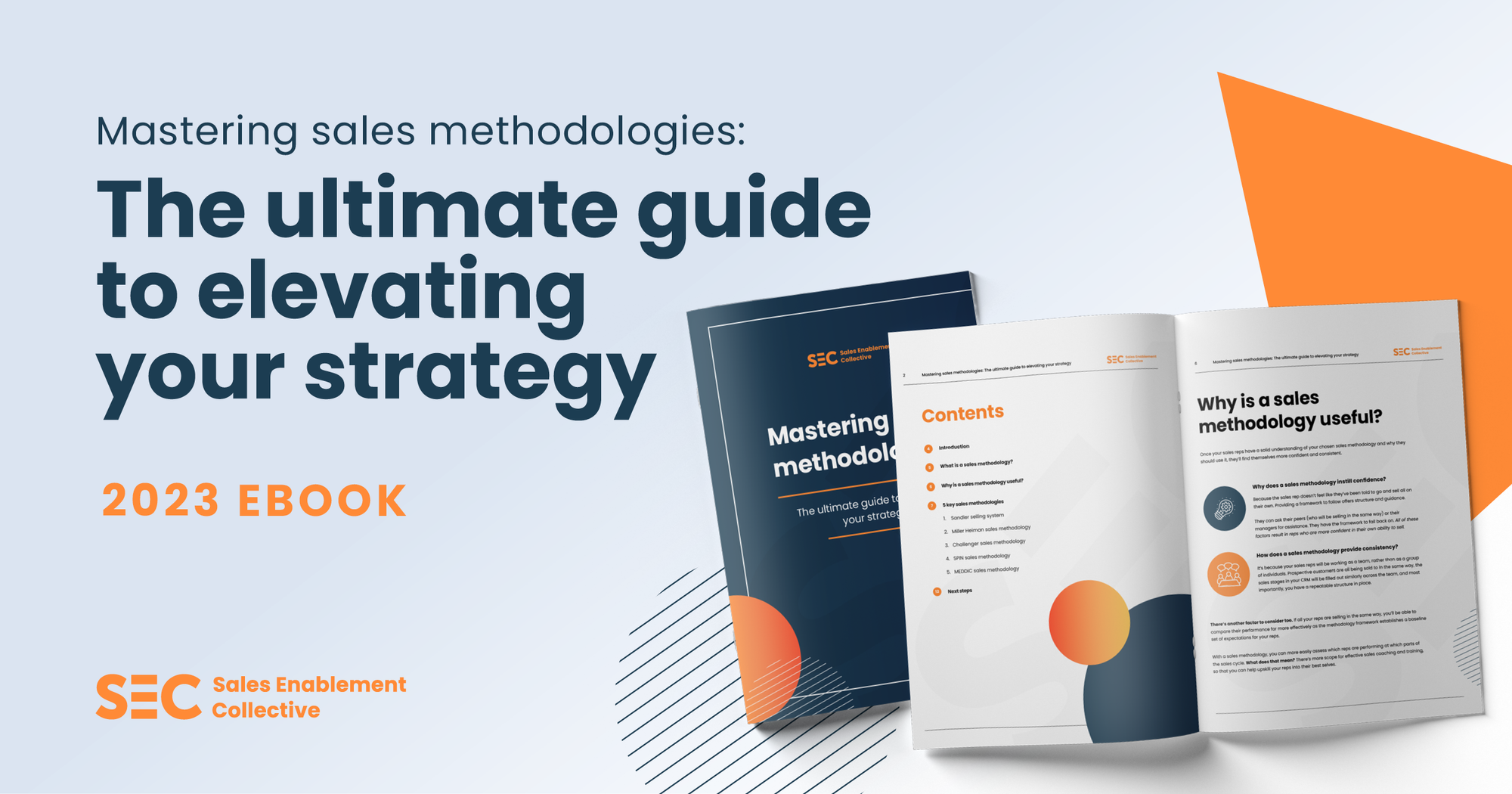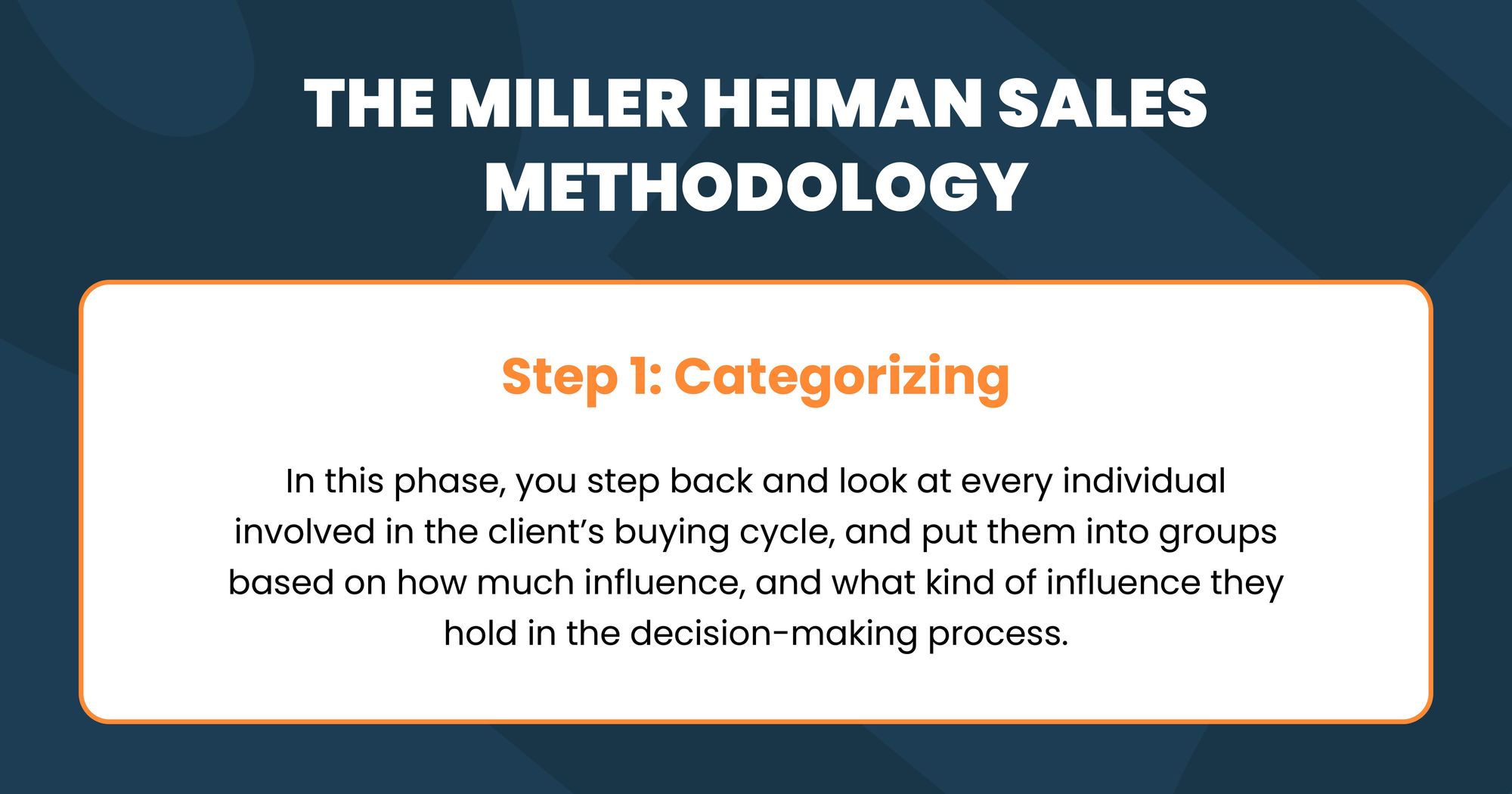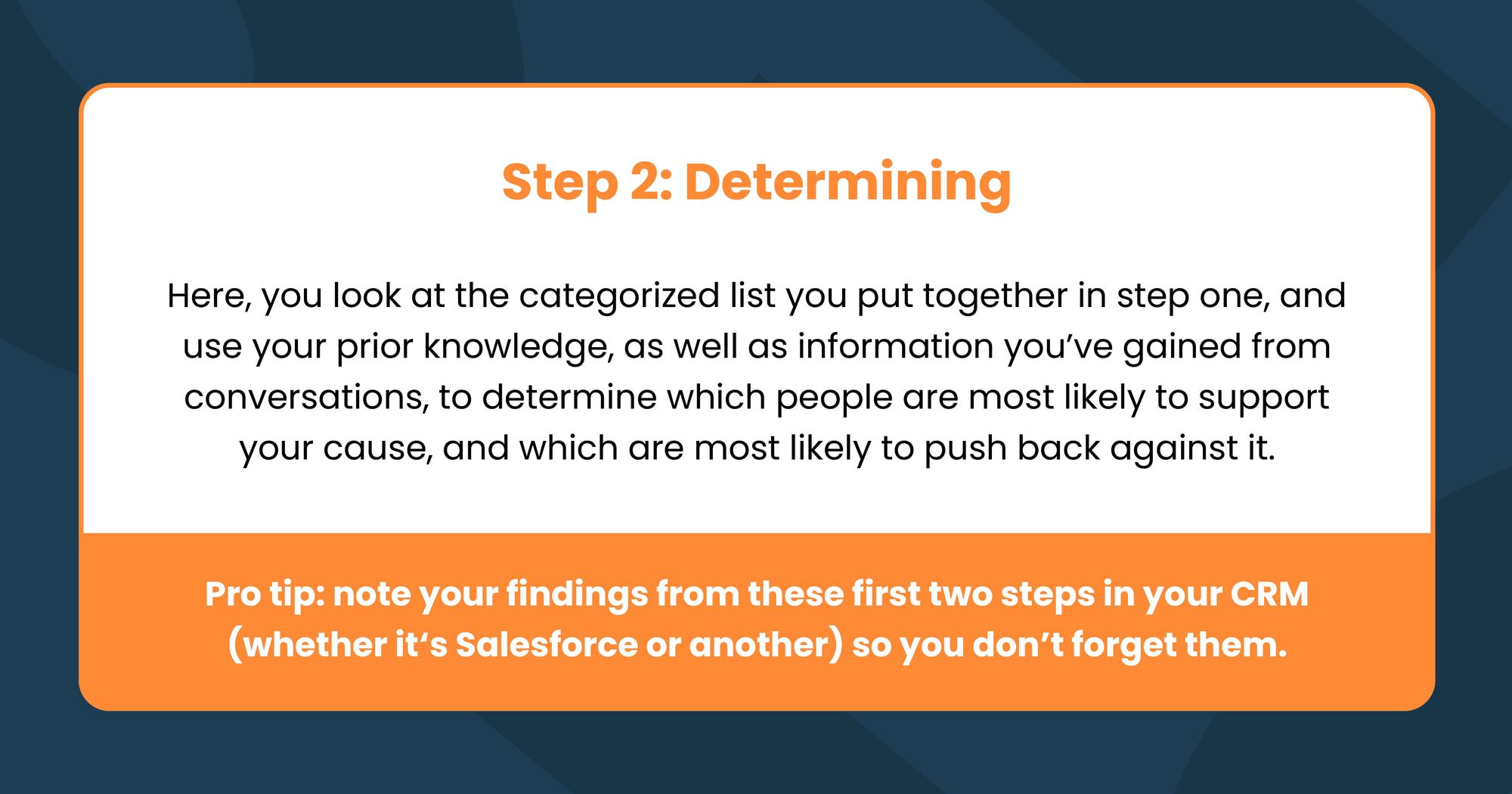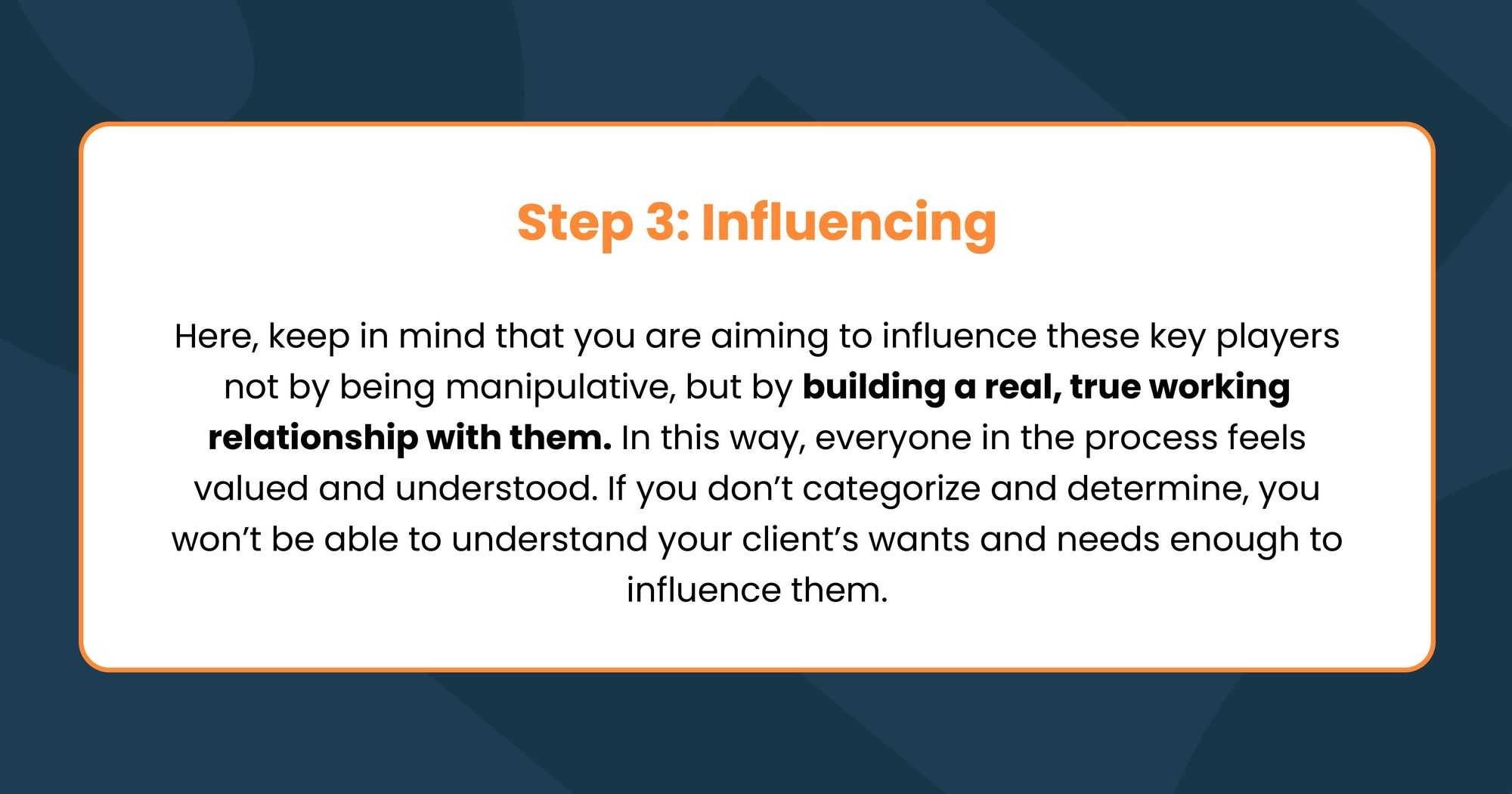Anyone involved in sales knows how important it is to have solid processes in place. While different salespeople may have different approaches and methodologies, the key to success is following the structure that works best for you.
These methodologies help salespeople have a structured approach for each time they approach a sale. That repetition of the sales process leads to consistency, and that consistency will naturally lead to better results.
At the end of the day, it’s about building good habits, and a salesperson with good habits is going to be more effective. It’s that simple.
Providing salespeople with the tools, structures, and training to facilitate long-term learning and success is what sales enablement is all about, and it’s exactly why if you’re in sales enablement you need to keep an eye out for potential new approaches all the time.

The Miller Heiman sales methodology
If you’ve been in the sales game for a little while, you may have heard about the Miller Heiman sales methodology.
You might also hear it described as Miller Heiman’s Strategic Selling sales methodology, or the Miller Heiman sales process. It’s considered one of the most proven frameworks for closing a sale.
This methodology, devised by Robert Miller and Stephen Heiman of the Miller Heiman group, aims to be the most effective way of managing large, complicated B2B deals.
Deals of this kind usually involve large amounts of money, and almost always require more than one or two people to approve it before it’s closed.
If a salesperson approaches a big money deal like this without a reliable, consistent methodology that they are familiar with, they may find themselves overwhelmed by a number of things. The number of people involved in the deal, the length of the sales cycle, and the figures involved in the deal can all be intimidating.
That’s where the Miller Heiman sales training method comes in.
The method focuses on building and managing relationships with the different parties involved, as well as closing the sale.
These large, complex B2B deals are about more than just a product. It’s about understanding the involved parties’ needs and wants on a grander scale, too.
The Miller Heiman approach to account management has you build and manage relationships with the stakeholders and decision makers by following three steps.

Step 1: Categorizing
The first is categorizing. In this phase, you step back and look at every individual involved in the client’s buying cycle, and put them into groups based on how much influence, and what kind of influence they hold in the decision-making process.
You have to be aware of the fact that in large deals, the number of people you’ll have to analyze could be quite high, so be prepared.
The Miller Heiman approach is about relationship-building, so knowing everyone involved and what they contribute to the buying process is really useful.

Step 2: Determining
The next step is the determining stage. Here, you look at the categorized list you put together in step one, and use your prior knowledge, as well as information you’ve gained from conversations, to determine which people are most likely to support your cause, and which are most likely to push back against it.
For example an IT Director may be highly supportive of integrating new sales software into the business, whereas a CFO may have budgetary concerns.
With the Miller Heiman methodology, it’s your role to understand where you have support, and where you still need to gain it in order to not only successfully close the deal, but maintain strong working relationships with the parties involved.
One quick tip is to note your findings from these first two steps in your CRM (whether it‘s Salesforce or another) so you don’t forget them.

Step 3: Influencing
The final part is the influencing stage. This is when you begin to apply the research and analysis you conducted in the categorizing and determining phases.
Here, keep in mind that you are aiming to influence these key players not by being manipulative, but by building a real, true working relationship with them.
The people who you’ve determined as being on your side? Appreciate them, support them, and maintain that positive relationship with them.
Those who are more hesitant about buying in? Don’t neglect them. You have to communicate with them, listen to and understand their concerns, and see things from their perspective.
In this way, everyone in the process feels valued and understood. If you don’t categorize and determine, you won’t be able to understand your client’s wants and needs enough to influence them.
It's a win-win in both the long-term and short-term. You get closer to sealing the deal, the key players feel appreciated, and you forge a great working relationship going forward.

Fill out the form below to get our ebook on how to master sales methodologies. This ebook covers proven sales methodologies to help you close more deals. It’s the ultimate guide to elevating your sales strategy.
The Miller Heiman methodology and sales enablement - is it for you?
That’s the Miller Heiman sales stages summarized, but is it something that can benefit your sales teams, increase sales performance, and enhance your sales enablement strategies?
Well, large B2B deals are difficult and can quickly get messy and disorganized.
The Miller Heiman training methodology provides your team with a repeatable, scalable process to deal with these tricky deals. The fact that it is a process defined by steps means training new sales reps in this way is that bit easier, too.
From a sales enablement or sales management standpoint, creating an environment where reps are taught to be prepared for even the most challenging deals is the dream.
The Miller Heiman methodology allows you to apply the same techniques in small deals to larger ones, allowing reps to make continuous progression using the same process. This means that you enable them to learn and adapt to these new challenges beyond their initial onboarding phase.
Improving sales performance
When you step back and look at the big picture, the Miller Heiman process can fit seamlessly into your sales enablement initiatives.
Through this, you can instill a mentality of relationship-building in an organization. Big deals involving big figures and big clients don’t just end once all the necessary paperwork is signed off.
The Miller Heiman method results in long-term rapport building with these valued clients, and that relationship can be maintained well after a deal is closed.
Doing this is always a positive as it opens up future opportunities and possibilities with these people. The last thing you want is for a valued client to feel forgotten about.
If you want to build real long-term relationships with your clients, the Miller Heiman methodology might be the process your organization needs to revolutionize its sales ability.
Best of all, you can integrate it to your current sales enablement initiatives.
If you're not sure if the Miller Heiman methodology is for you, check out our other articles on sales methodologies such as MEDDIC, Sandler, Challenger, and SPIN.

Want to set up your sales enablement career up for success? Get Sales Enablement Certified and learn how to make a big impact - straight from the experts.



